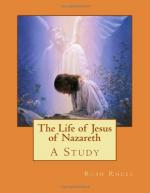47. With this conclusion most modern discussions of the question rest, and it is possible that it may finally win common consent. The order of Mark’s narrative, however, challenges it. This gospel records near the beginning (ii. 23) a controversy with the Pharisees occasioned by the fact that Jesus’ disciples plucked and ate the ripening grain as they passed on a Sabbath day through the fields. As Mark places much later (vi. 30-34) the feeding of the five thousand, which occurred at a Passover, that is the beginning of the harvest (Lev. xxiii. 5-11), his order suggests the necessity of including two harvest seasons in the ministry in Galilee, and consequently four Passovers in the public life of Jesus. Two considerations are urged against this conclusion. (1) Papias in his reference to the Gospel of Mark criticises the order of the gospel; (2) Mark ii. 1 to iii. 6 contains a group of five conflicts with the critics of Jesus, which represents a massing of opposition that seems unlikely at the outset of his Galilean work. The remark of Papias must remain obscure until his standard of comparison is known. Some suggest that he knew John’s order and preferred it, others that he agreed with that adopted by Tatian in his Diatessaron. Mark is in accord with neither of these. No one, however, knows what order Papias preferred. The early conflict group does appear like a collection drawn from different parts of the ministry. Yet the nucleus of the group—the cure of the paralytic (ii. 1-12) and the call of Levi (ii. 13-17)—is clearly in its right place in Mark (see Holtzmann, Hand-commentar, I. 10). The question about fasting (ii. 18-22) may have been asked much later, and its present place may be due to association in tradition with the criticism of Jesus’ fellowship with publicans (ii. 16). In like manner the cure of the withered hand (iii. 1-6) may have become artificially grouped with the incident of the cornfields. It is possible, also, that both Sabbath controversies owe their early place in the gospel to traditional association with the early




